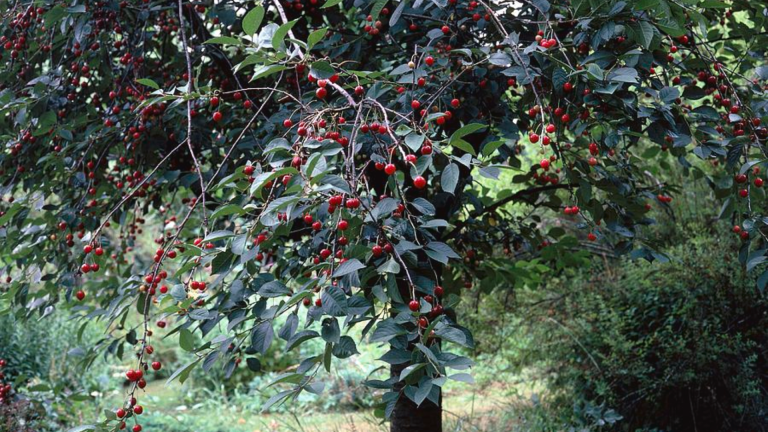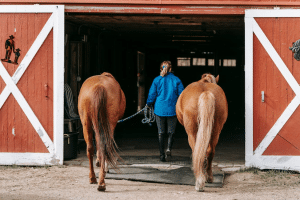Some trees bring color, food, and shade all in one. The wild cherry tree is one of them.
This tree, known by its scientific name Prunus avium, is a tall tree that drops its leaves in winter. It grows in many parts of Europe and Western Asia, and is now also found in other areas with suitable conditions.
It can reach heights of up to 25 meters. In spring, it shows white flowers with five petals. These flowers turn into small cherries by early summer. The fruit starts out red and becomes a deep purple when ripe.
I love growing wild cherry trees not just for the sweet fruit, but also for the shade they give and the way they bring bees and birds into my garden.
In this blog, I’ll share why this tree is one of my top picks for a colorful, multi-purpose addition to any yard.
How to Identify a Wild Cherry Tree?
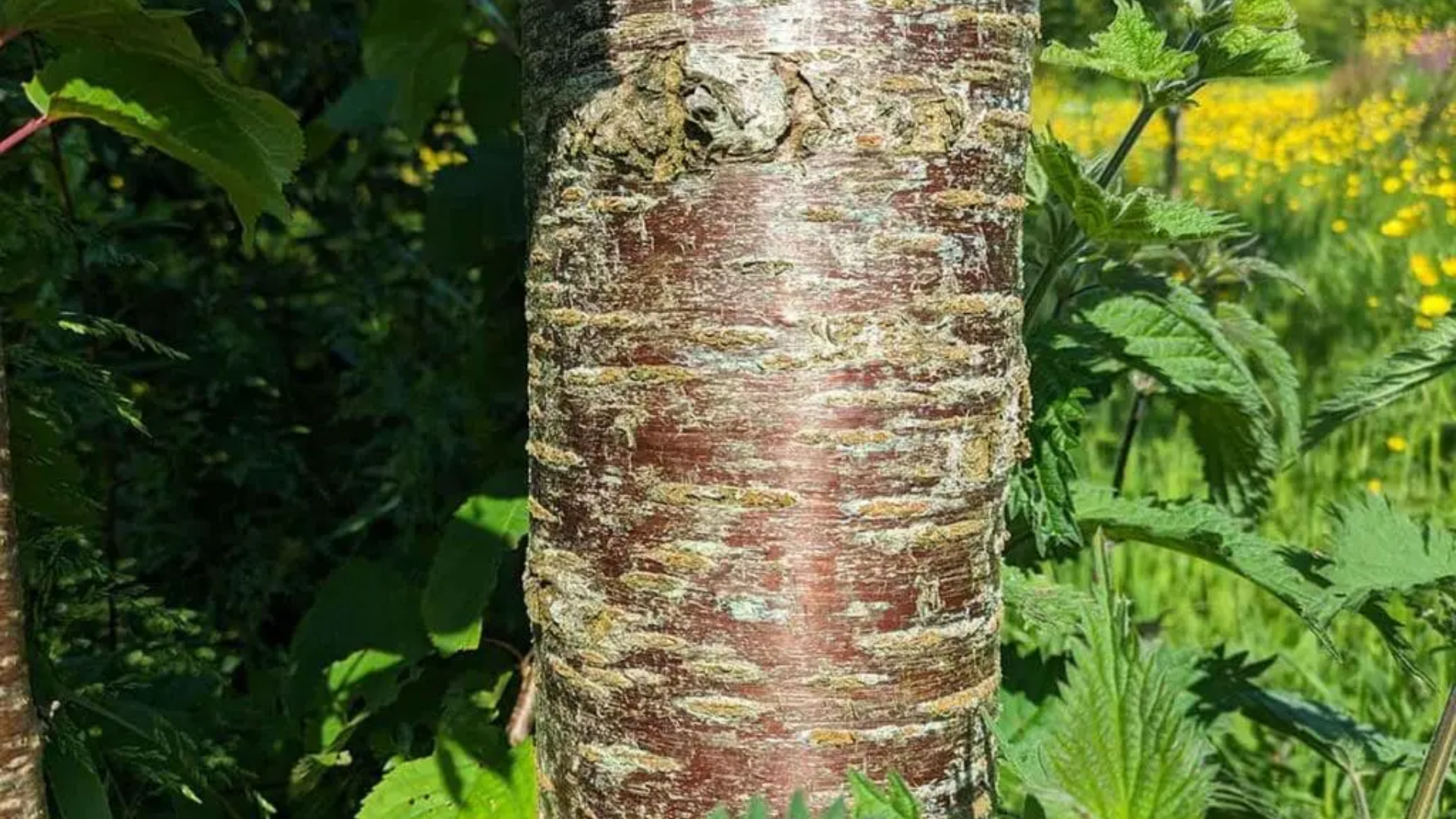
Knowing how to spot a wild cherry tree is helpful if you’re planting one or simply want to learn about the trees around you. This tree shows changes in every season, making it easier to identify if you know what to look for. From its leaves to its bark, each part gives you signs that it’s a wild cherry.
- Leaves: These are oval with small, sharp edges. In fall, they turn shades of yellow, red, or orange.
- Flowers: The tree produces clusters of white flowers, each with five petals. These bloom in early to mid-spring, before the leaves have fully grown.
- Fruit: Cherries develop after the flowers have faded. They are small, round, and turn from red to deep purple as they ripen in early summer.
- Bark: The bark is smooth and reddish-brown. Look for thin, pale lines across the trunk—these are lenticels, which help the tree exchange gases.
- Growth Habit: The tree grows upright with one main trunk. As it matures, the top spreads out into a rounded shape.
Each of these features becomes more noticeable as the seasons change. Once you learn to spot them, it becomes easy to recognize a wild cherry tree in yards, woods, or along roadsides.
Natural Habitat and Distribution
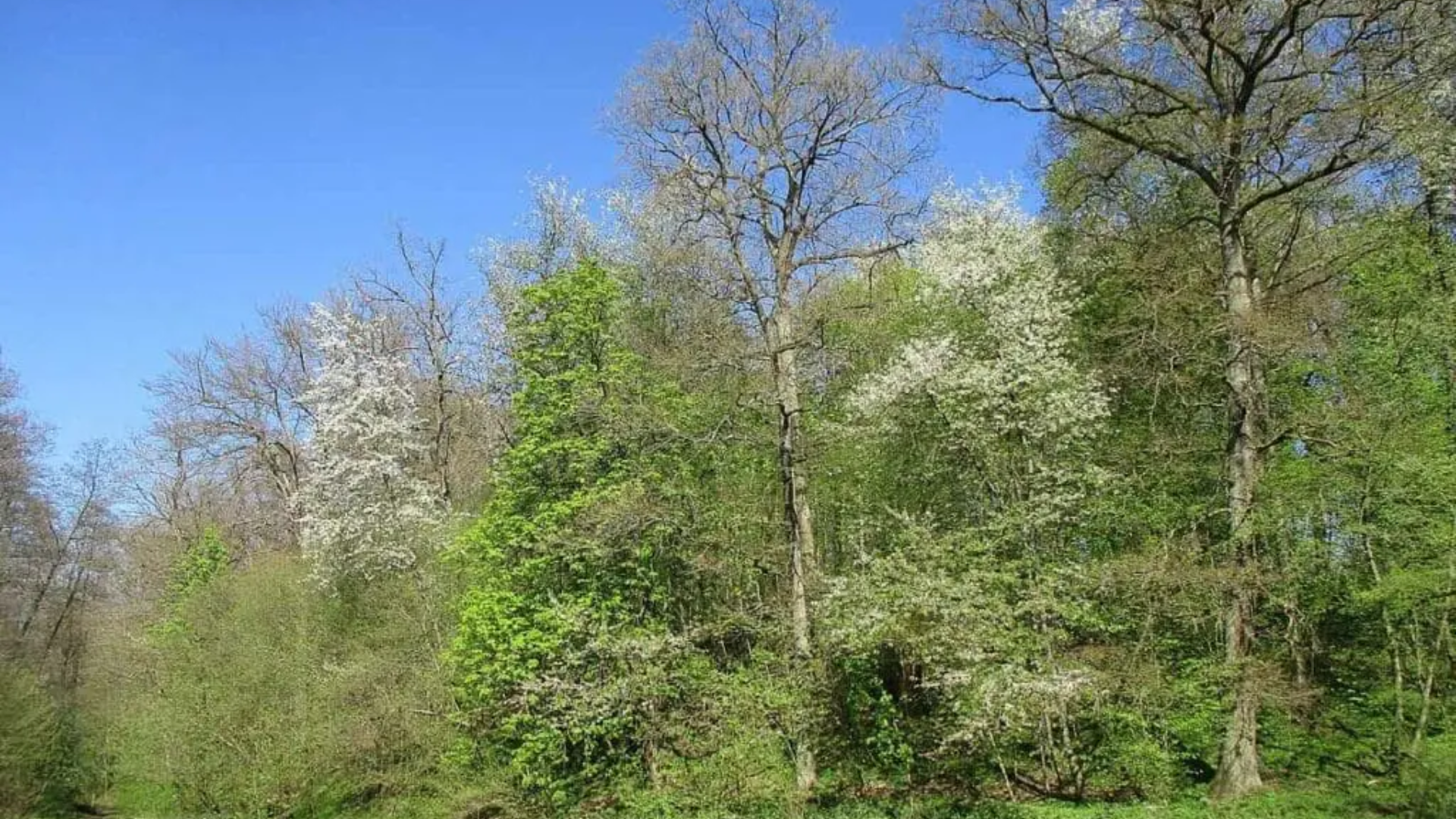
The wild cherry tree grows in many places, but it originated in Europe and parts of western Asia. Over time, people have planted it in other areas where the weather and soil are a good match.
It grows well in open woodlands, on forest edges, and in hedgerows. It can also grow in open fields where the soil drains well. These places provide the tree with sufficient space and light. Wild cherry trees like full sun but can still grow in spots with some shade. They do best with six or more hours of sunlight each day.
The tree is able to live in different types of soil, but it grows best in rich, well-drained ground. Soil that holds too much water for too long can cause problems for the roots.
Ecological Importance
The wild cherry tree does more than just grow fruit. It helps many animals and insects that live nearby. This makes it an important tree for the environment.
In the spring, flowers provide nectar to bees and other pollinators. These insects visit the blossoms and aid the tree in producing fruit. Once the fruit grows, birds and small animals eat the cherries. This helps the seeds spread to new places where more trees can grow.
The tree also supports insects, such as caterpillars that turn into moths. These insects feed on the leaves and become food for birds and other wildlife.
Due to all this, the wild cherry tree contributes to the health of the land where it grows. It brings life to gardens, woods, and fields.
Cultivation and Care of Wild Cherry Trees
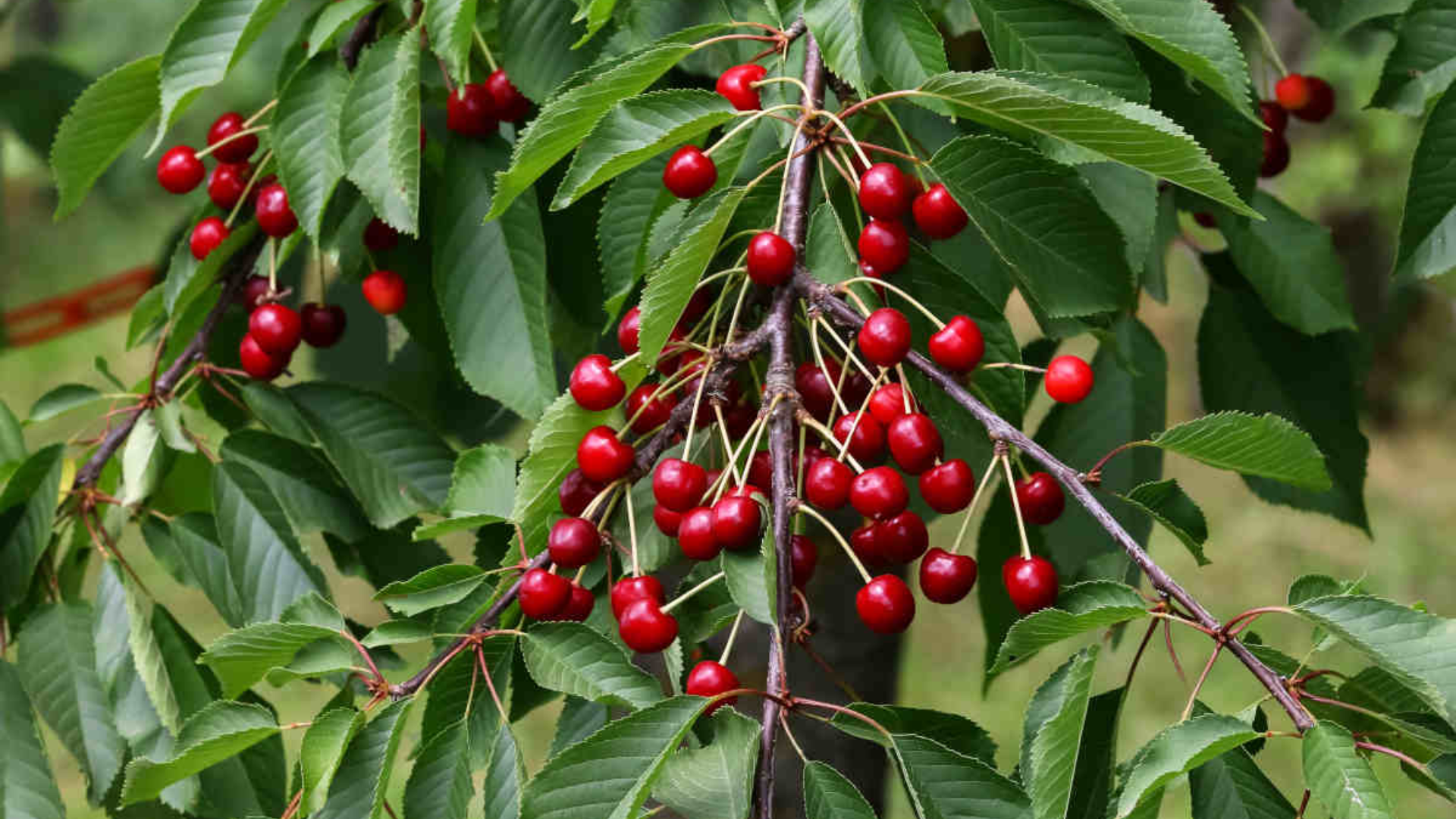
Growing a wild cherry tree is straightforward if you provide it with the right start and care for it as it develops. These trees don’t need too much attention, but a few steps make a big difference in how well they grow and how much fruit they give.
- Planting: The best time to plant is when the tree is not actively growing, which is ideal from late autumn through early spring. Select a spot with full sunlight and allow it to grow tall and wide.
- Maintenance: These trees require minimal pruning. Trim only to remove broken or sick branches. Water the tree often during the first year. After that, it will need less water unless it’s very dry.
- Pests and Diseases: Common problems include aphids, caterpillars, and fungal infections. Inspect the leaves and bark regularly. If you notice damage, address it promptly with the appropriate treatment method for the specific issue.
With steady care and enough space, a wild cherry tree can grow strong and healthy. It can bring fruit, flowers, and shade to your space while also supporting wildlife, such as bees and birds.
Uses of Wild Cherry Trees
The wild cherry tree is known for more than its beauty. It serves multiple purposes, making it useful in both natural spaces and home gardens. People grow it for its wood, its fruit, and the way it looks during different seasons.
- Timber: The wood from this tree is strong and has a rich reddish-brown color. It is often used in the manufacture of furniture, cabinets, and other wooden items.
- Culinary: The cherries can be used in cooking. They are often turned into jams, jellies, or even liqueurs.
- Note: The seeds inside the cherries have substances that can be harmful if eaten in large amounts. It’s safest to remove the pits before eating or cooking.
- Ornamental: This tree is planted in yards and parks for its spring blossoms and fall leaf color. It adds life and color to open spaces.
Due to these uses, the wild cherry tree remains a favorite for both practical and ornamental purposes.
Varieties and Related Species of Wild Cherry Trees
There are various types of wild cherry trees, each offering a distinct characteristic. Some are grown for their flowers, while others are known for their fruit.
The ‘Plena’ variety has full, double flowers. It is mainly planted for looks and is not grown for fruit. People often use it in gardens and parks because of its large white blossoms.
The ‘Stella’ variety is self-fertile, meaning it can produce fruit without the need for another tree nearby. It produces sweet cherries and is a good choice for small gardens.
There are also trees related to the wild cherry. Black Cherry (Prunus serotina) is native to North America. It is used for both its wood and its fruit. Chokecherry (Prunus virginiana) is a smaller tree or shrub. It grows fruit that is sharp in taste and is often used in syrups or jellies.
Conclusion
The wild cherry tree offers more than just looks. It gives food, helps the environment, and brings wildlife to your yard or space. Its flowers bloom in spring, and its fruit grows in early summer.
We covered what this tree is, where it grows, and how it looks through the seasons. It grows best in full sun and requires ample space to reach its full size. Its cherries feed birds and can also be picked by people.
This tree also plays a role in helping pollinators. Bees visit its flowers, and other small animals eat its fruit. It can support more life in your yard while adding color in spring and summer.
Wild cherry trees are a strong choice for open spaces and garden edges. With good soil and proper care, they can thrive and last for many years. If you want a tree that gives back in many ways, this one is worth planting.
Frequently Asked Questions
Can You Grow a Wild Cherry Tree in a Container?
It is possible, but not ideal. Wild cherry trees grow quite large and require ample space for their extensive root systems to spread. A very large container may be suitable for young trees, but they will eventually need to be planted in the ground to thrive.
Do Wild Cherry Trees Attract Bees and Other Insects?
Yes, the flowers of wild cherry trees are a good source of nectar for bees and other pollinators. These insects help the tree by spreading pollen, which supports fruit production.
How Long Does It Take for a Wild Cherry Tree To Grow Fruit?
It depends on the tree’s age and growing conditions. Most wild cherry trees begin to produce fruit 4 to 7 years after planting, provided they are healthy and well-cared for.
Are Wild Cherry Trees Safe Around Pets?
The fruit is safe in small amounts, but the leaves, bark, and seeds contain substances that may be harmful to pets if eaten. It’s best to keep pets from chewing on the tree or eating fallen leaves.
Do Wild Cherry Trees Lose Their Leaves in Winter?
Yes, wild cherry trees are deciduous. This means they shed their leaves in the fall and remain bare during winter. New leaves grow back in spring along with the blossoms.


